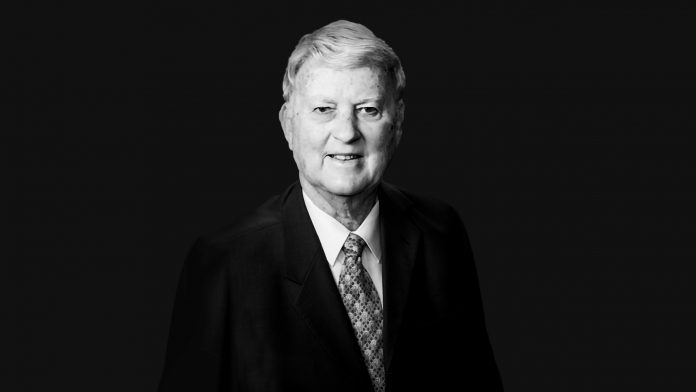Vinson Synan, one of the first historians of Pentecostalism and a powerful advocate for the breadth and depth of the Pentecostal movement, died on Sunday. He was 85.
Synan was a professionally trained historian with a doctorate from the University of Georgia. He was the son of a Pentecostal pastor who himself became a Pentecostal pastor and eventually the assistant general superintendent of the International Pentecostal Holiness Church (IPHC).
He sometimes experienced a “tug of war” between his scholarly and religious commitments, Synan wrote in his 2010 memoir. But in both roles, he helped people understand Pentecostalism as a tradition with deep Protestant roots and as an ongoing movement that was expanding to include Christians in all denominations all over the world.
Born in 1934 and raised in the Pentecostal Holiness church, some of Synan’s earliest memories were listening to his father and uncle preach to poor white people during the Great Depression in small Virginia churches and revivals.
“People would be up on their feet ‘shouting the victory,’” he wrote. “The altar calls were a sight to behold and sometimes painful to hear. People crowded the front of the church seeking salvation, sanctification, baptism in the Holy Spirit, or divine healing. Often the roar of concert prayer was deafening.”
These people were known derogatively as “holy rollers.” Synan found the term offensive and grew interested in the history of Pentecostalism. He was surprised to find that the elders in his church knew little of their Pentecostal past.
His father, Joseph Synan, didn’t know anything about Charles Fox Parham, for example, the original proponent of the decisive Pentecostal doctrine that speaking in tongues is “Bible evidence” of a second baptism and the indwelling of the Holy Spirit.
The elder Synan did know about the second leader of the movement, William J. Seymour, who led the Azusa Street Revival in Los Angeles in 1906, but he didn’t have all the details right. He told his son that Seymour, an African American, was “a one-legged man.” Seymour actually had two good legs but was blind in one eye from smallpox. In the tangle of testimonies of faith and miracles, passed down from preacher to son, the bad eye had somehow become a missing leg.
But 12-year-old Vinson Synan was awestruck. The misremembered and half-remembered history fascinated him. He had to know the true scale and scope of the Pentecostal tradition.
That became possible at the University of Georgia, where the historian Horace Montgomery allowed Synan to write his dissertation on the history of the movement. Pentecostalism was an unusual subject for an academic study, but Montgomery—a Unitarian Universalist who studied the politics of poor white people—thought it was interesting, and he promoted the project. It became Synan’s groundbreaking 1971 history, The Holiness-Pentecostal Movement.
The book rooted Pentecostalism in the teachings of John Wesley, arguing it didn’t spring from nothing but developed out of British and American revivalism, Anglican spirituality, and the Keswick “higher living” theology. Synan’s account has become the standard narrative of Pentecostalism, but at the time it cut against Pentecostals’ sense of themselves as a Holy Spirit rupture in history.
When Synan published a revised version of the book in 1997, he changed the title to The Holiness-Pentecostal Tradition. He was arguing, he said, that Pentecostalism was a tradition, “despite the fact that most Pentecostals have disdained the word ‘tradition’ as belonging to the older and colder ‘established’ churches.”
In the process of researching and publishing the book, Synan also met and befriended the archivists and church historians at the different Pentecostal denominations. He brought them together in 1970 to start the Society for Pentecostal Studies, the first academic guild for the purpose.
Synan was not interested in a purely academic relationship to Pentecostalism, though. Even as he was working on his dissertation, he planted and pastored a Pentecostal church in Georgia. And as a minister, he found his own sense of Pentecostalism expanding in the 1970s.
Source: Christianity Today
All Content & Images are provided by the acknowledged source
